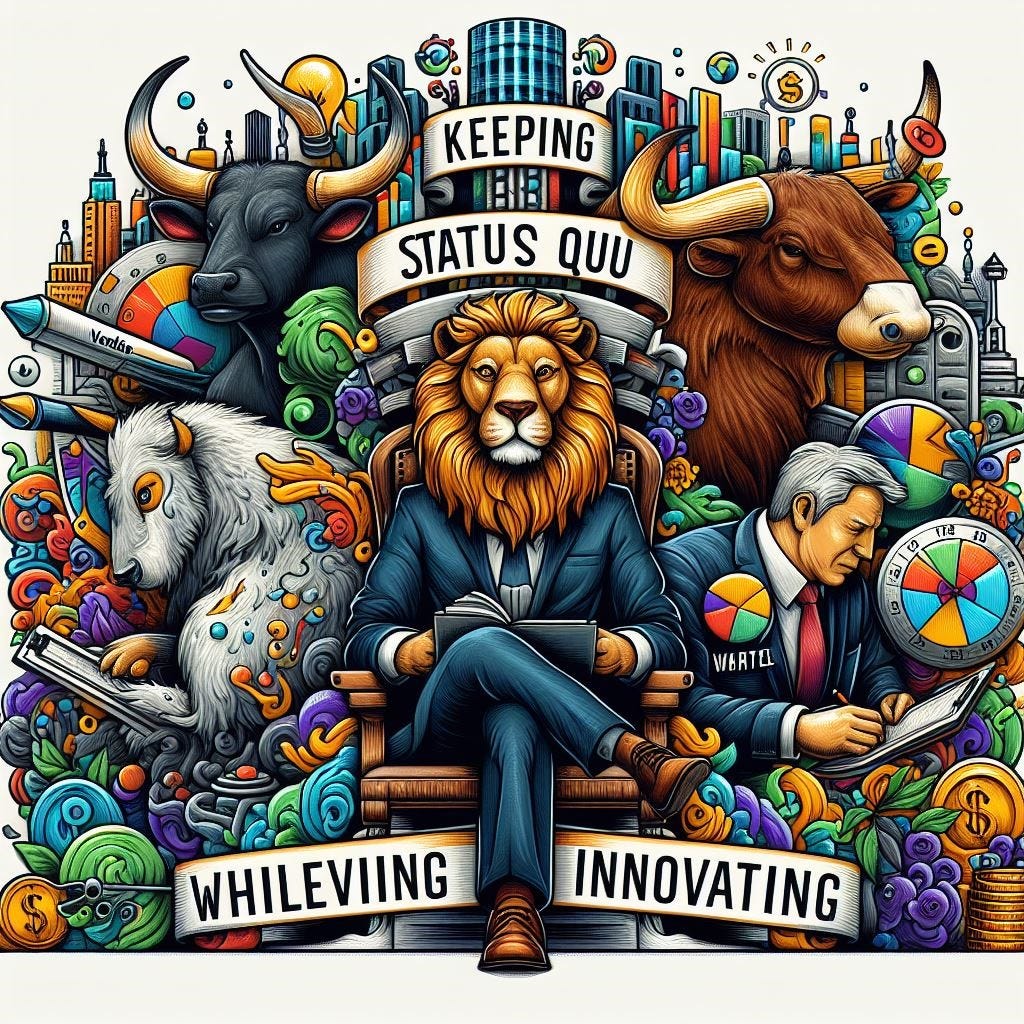Keeping Status Quo While Innovating In The Boardroom: A 2030 Approach to Business Leadership
by Yusuf Azizullah GBAC- Boardroomeducation.com CEO
Every day, I am privileged to learn, listen, work with, and advise board chairs and CEOs of publicly listed companies since 2003. A couple of common concerns is always; “leaving a lasting legacy that stands the test of times”
Boardroom decisions require uniformity and the “Status Quo” provides stability and business prosperity, however, innovation demands change and trying a less traveled and riskier path.
What I say
A lot of CEOs are practical people when it comes to decision-making, and I love working with them! They are always open to experimenting with new, innovative ideas.
However, for the norm, traditional boards; loving the “status quo” present innovative ideas as ways to protect current revenue streams and improve efficiency. This makes change seem less threatening.
CES 2024 Kicks Off this week followed by World Economic Forum DAVOS 2024 both will highlight “AI and Boardroom Governance around it”, I will add that cyber security will be discussed more candidly as more companies disclose cyber breaches; Comcast and Adobe.
Innovate, Not Disrupt: The Boardroom Tightrope, Walk, Don’t Run
Balance is key in the boardroom. Polish your core business like a diamond and cautiously explore new ideas
When bringing new ideas to the boardroom, take measured steps. Move forward steadily with small innovations that uphold, rather than upend, what has made your company successful.
Small, smart improvements keep your engine humming, while measured explorations pave the way for the future. No need to rewrite the story – just add exciting chapters!
TRAVEL ANALOGY
Think of your company as a train chugging along its main route (core operations). To explore new destinations (innovation), you need off-track sidings for side trips (dedicated space). Short hikes (pilot projects) show the best sights before planning a scenic route (full implementation). Listening to fellow travelers (data, AI, automation) reveals hidden gems, and everyone needs new backpacks (skills) for the journey!
Building Consensus
Include everyone: stakeholders in the decision-making process. Be open about why changes are happening. Celebrate even small wins in innovation. Regularly check how new ideas are doing and make changes if needed.
Boardroom Blind Spots: When Clinging to the Past Costs Companies Their Future
Achieving a delicate balance between preserving the status quo and fostering innovation is a nuanced challenge for companies. While some excel at this intricate dance, others stumble along the way. Allow me to share with you two compelling case studies from Harvard Business School, along with an insightful example from Ivy League executive education. These illustrations highlight both success stories and cautionary tales in the pursuit of this endeavor.
Success: LEGO's Reinvention Through Play
Case Study: "LEGO: Building a Brand for the 21st Century" (HBS 9-706-048)
Summary: Founded in 1932, LEGO faced near bankruptcy in the early 2000s due to intense competition and overexpansion. The company successfully reinvented itself by:
Refocusing on its core values: Emphasizing the timeless appeal of creative play and fostering a culture of innovation within the core brick system.
Embracing digital opportunities: Launching video games and online communities that complemented the physical bricks, expanding brand reach and engagement.
Maintaining brand identity: Balancing innovation with respect for its heritage, ensuring consistency in the LEGO experience across generations.
Outcome: LEGO's turnaround is a testament to the power of balancing tradition with strategic innovation. The company achieved record profits in 2022, demonstrating the success of its approach.
Failure: Kodaks’ Missed Digital Moment
Case Study: "Kodak: The Downfall of an American Icon" (HBS 9-305-016)
Summary: Kodak, a pioneer in photography, failed to adapt to the digital revolution, leading to its 2012 bankruptcy. Key factors in its downfall include:
Overreliance on core business: Kodak clung to its film business despite the rise of digital cameras, missing opportunities to invest in and capitalize on this new technology.
Internal resistance to change: A risk-averse culture and bureaucratic red tape stifled innovation and hampered rapid decision-making.
Lack of strategic vision: Kodak failed to anticipate the broader shift towards digital imaging and its implications for the photography industry.
Outcome: Kodak's cautionary tale highlights the dangers of clinging to the status quo in the face of disruptive change. Companies must be willing to adapt and innovate to avoid becoming obsolete.
Get Apple, Google, & Verizon boardroom secrets! -Invite GBAC for a focused (30-45 min) boardroom workshop.
Balancing innovation & governance: Master the tightrope.
Contact Yusuf ya@globalboardadvisors.com
Whats App USA 1) 571-277-0642






